Facts of sleeping
You might need to sit down before you read the following statistics, or better yet lie down: on average, people spend over 24 years in bed during their lifetime, most of which are spent sleeping. This unbelievably long time alone makes it clear just how important it is to have the right mattress. IMTEST has tested ten of the bestselling foam mattresses costing between €150 and €300 and reveals which mattress could become your new favourite for a good night’s sleep.
- 5 to 8 years is the period for which a mattress is used on average.
- Times is the number of times we wake up at night without realising.
- Percent of Germans sleep in the foetal position: on their side with knees drawn up.
The enemy in my bed
Most people think about their mattress very little or not at all. This only changes when they regularly fail to get a good night’s sleep, their day starts with pain or they crawl out of bed feeling more tired than they were when they went to bed the night before. Reasons for disturbed, non-restorative sleep vary widely and in many cases are actually nothing to do with the mattress itself. Stress and a hectic pace of life, an unhealthy lifestyle or acute worries about sleep are more often the cause. In such cases, it may be advisable to reduce stress factors first or break bad habits such as eating late, as well as avoid alcohol before bed and deal with any specific problems you are facing in everyday life.
But when is it actually time to start thinking about the mattress and possibly buying a new one? The simple answer is: if everything else in life is going well and your bad habits are not getting the better of you, but you’re still not managing to get a good night’s sleep and in the worst case scenario, you’re waking up with a considerable amount of tension. And if your mattress feels strange, thinner or seems like it might be sagging, it’s high time for a new one.
Foam mattresses put to the test
Broadly speaking, there are three types of mattress: foam, latex and spring. Further distinctions can be made within these groups. This test focuses on ten foam mattresses with the hardness grade “H3” (medium). They are 90 centimetres wide and between 18 and 26.5 centimetres thick. Although all of them are gasified plastic without a spring core, there are differences between them. But these differences are difficult to recognise externally. Material descriptions such as “QX”, “Hybrid” or “Smart” foam are often made-up terms that refer to both the material used and the construction principle, but they rarely off er clear orientation.
This test therefore includes all these types and they are all comparable with each other. The reason for this is: there are only a few foam manufacturers in the world, and they all process similar basic materials. The characteristic features of a mattress are created more by the different types of construction in combination with the different types of foam. However, regardless of this, the demands in terms of support and deformation behaviour or durability are always the same in the end.
The greatest variable: people.
The most unpredictable aspect in a mattress test is the individual person. If you go by the statements made by the manufacturers, every mattress is the absolute best, and they aren’t even generally wrong when they say that. And the reason they’re not is that the individual is the biggest variable. This is why the same mattress might be a curse every night for one person, but a blessing for another.
IMTEST has therefore commissioned the renowned testing laboratory ErgoSupport in Kiel to use objective measurements to find out which test mattress is most likely to be a nightly blessing for the majority of us. This should minimise the fact that there will always be individuals whose opinions will diff er, but it cannot of course completely exclude this possibility.
The science of good lying down
The basic idea behind the mattress test is simple: the test mattresses are assessed to see to what extent they are able to support the ideal recumbent posture from a medical-physiological perspective. Nevertheless, the individual person is still the focus: there are large and small, heavy and light, broad and slim people. Everyone feels comfort a little differently. For this reason, the body support characteristics of the mattresses were determined using the four most common body types (see below), both in side and back sleeping positions, as this is how most people sleep. Laboratory simulations of what happens when the mattress has to fulfil its task repeatedly over the long term were also carried out.
After all, mattresses are not disposable items but remain in use for between five and eight years. They are exposed to fluctuating temperatures and humidity as well as to the constant, repeated stress of the body lying on them. The laboratory carries out scientific tests to find the answer to the naive question of how long can the mattress withstand this? The answer to this question, together with the ergonomic characteristics of the test mattresses when new, has the greatest influence on the IMTEST overall rating.
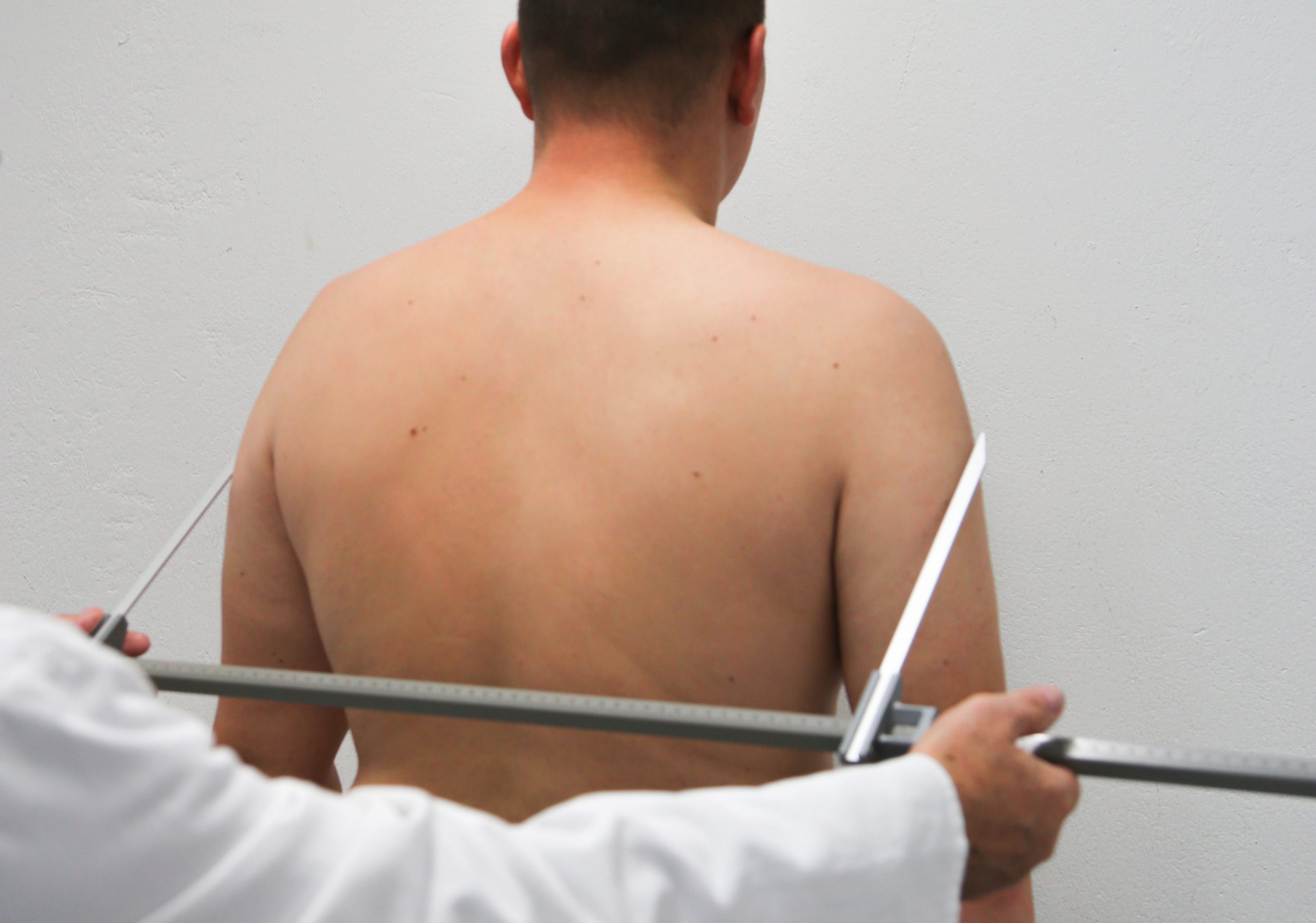
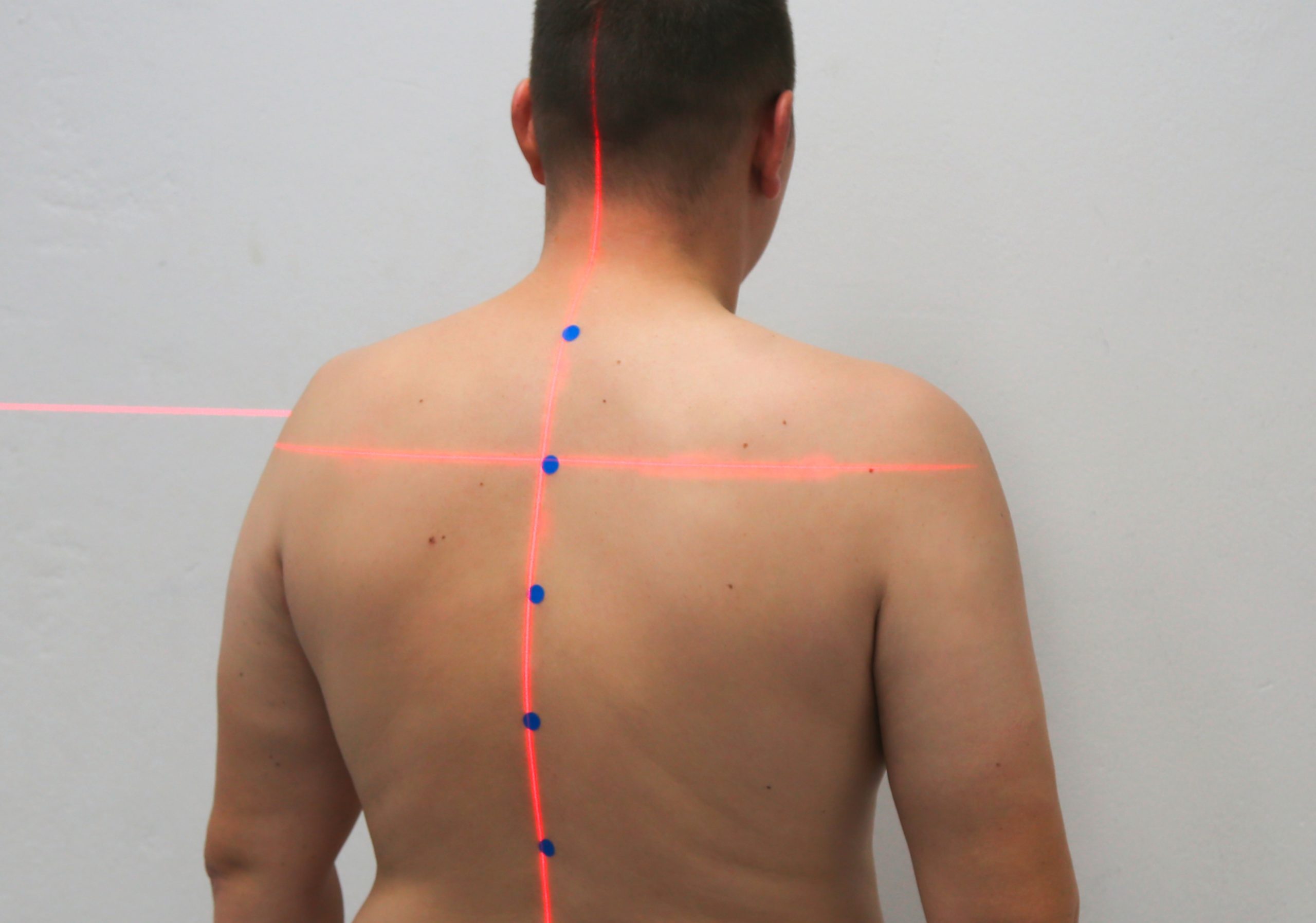
ONE MATTRESS FOR FOUR BODY TYPES
Everyone is different. There are large, small, robust and slim people. What they all have in common is: they all want to sleep well. For the IMTEST mattress test, the four most common body types were taken into account and the characteristics of the test mattresses examined. The body support characteristics for each individual type can be read about in detail in the test table.
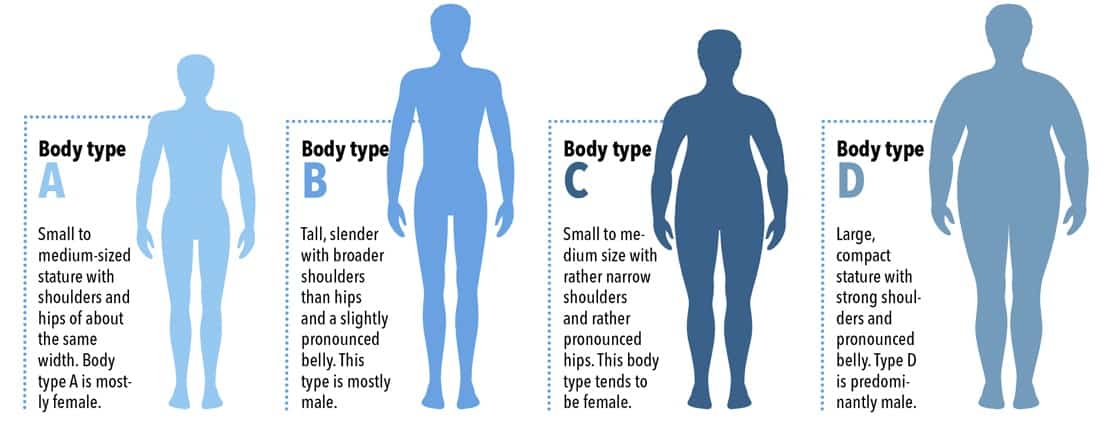
Properties of a mattress
All of us have probably tested a mattress on our own initiative before. Generally this involves lying down on a mattress in a furniture store or mattress shop, rolling around a bit, bouncing your hips, staring at the ceiling lost in thought and, in the best case scenario, being able to say: “Yes, this feels pretty good”. Our participants in the IMTEST reader test (issue 8/2020) did much the same, albeit for longer and in a more precise way.
The laboratory test does it a bit differently: the test criteria and methods are objective and firmly defi ned and the test participants are divided into four types.
The most important test criteria include:
This is where the experts look at the question of what percentage of the body’s surface area is in contact with the surface of the mattress in standardised lying positions. In simple terms, it is about 20 per cent on a hard surface and 100 per cent in water. In the case of mattresses, the physiologically determined maximum value is around 75 per cent, but this is not the ideal value. The ideal value is around 46 to 55 per cent, but is hardly ever achieved by a foam mattress in the tested hardness range. In this test, the best values were around 60 per cent.
An essential part of the test is to determine how much the mattress changes the spinal position of the test person. Depending on the type of mattress, a reasonable negative image of the lying body can be produced using measuring rods attached under the mattress (see photo on page 8). This also shows how well the mattress and the respective zones adapt to the different body parts of varying weight and keep the entire body in a position that is desirable from a physiological point of view. The deformation measurement is carried out in the back and side position both when the mattress is new and after completion of a continuous load test.
This test determines the extent to which a mattress swings and rocks in the event of sudden weight shifts, such as when tossing and turning. It involves a test weight falling on the mattress from a fixed height while the experts measure the height to which it sinks in (amplitude) and the vibration frequency. If the values vary too greatly from the statistical ideal value, this leads to a poorer rating.
Resistance to a change in position
This value provides information about the force that is needed to move the body into another position. As a basic explanation of this assessment: if this value is very high, the body practically ‘sinks’ into the mattress and turning over becomes strenuous. If it falls below an ideal value, the mattress will feel more like a board than something to sleep on comfortably.
With softer mattresses in particular, the shoulder region can be pressed forward when the person is sleeping on their back. This can constrict the thorax and thus not only impact the subjective feeling of comfort, but also have a negative physiological effect, for example in the form of tension. This phenomenon, which is known as the shoulder-folding effect, cannot be completely prevented. But the less it occurs, the better a mattress is rated on this point.
This tests to what extent a localised load on a mattress also affects the surrounding surface area. In other words: does the whole mattress move when there is a point load or only the loaded area? The answer to this is particularly interesting when you look at the wider versions of the models used in the test instead of the 90 centimetre mattresses. It may give an indication as to how much you will be shaken around if your partner comes to bed later and then lies down beside you.
Subjective feeling of hardness
All the mattresses used in the test have the indicated degree of hardness “medium” (H3). In the case of reversible mattresses with different hardnesses, only the H3 side was tested. The disadvantage of this sole reference to the hardness of the mattress for buyers is that it is not a standardised measure. This is why mattresses can have differing degrees of hardness even though they might all be marked “H3”. For this reason, experts have developed an algorithm that can simulate the subjective hardness based on measured values. According to scientific standards, this currently comes the closest to the “perceived hardness”. IMTEST has evaluated the deviation of this theoretical – because it is calculated – hardness from the specificed hardness.
HOW IMTEST TESTS
The Kiel test institute ErgoSupport was commissioned to test the mattresses using scientific methods. The tests they carried out included:
If possible, a mattress should stay in shape and retain its properties for many years, but it is constantly subjected to dynamic loads. In order to be able to take these loads into account in a test and make statements about durability, each test mattress is pressed, compressed and rammed with a standardised heavy roller. In the IMTEST test, this was done 30,000 times with each test mattress. The body support characteristics and other factors were then recorded again.
A large number of partial tests are carried out with the aid of a stamp, which is pressed into the mattress under specific overall conditions such as as force and depth (amplitude) and in specific places on the mattress. From this, values such as “residual height” can be determined. This value indicates, for example, how thick the remaining mattress is when a test participant lies on it. Other test points, such as the change in technical hardness, as well as the values for calculating the subjective feeling of hardness, are also determined in this way.
A similar stamp, only in a double variant, is needed to determine a value for the point elasticity. This is not so much about the way the mattress changes under the stamps themselves, but rather the area in between them: as the two stamps are pressed into the mattress, the entire device focuses its attention on the area in between and registers how much this intermediate area gives way – or not. In simple terms: if the intermediate area remains stable, the point elasticity is high.
Two samples of each of the test mattresses were supplied to the laboratory. One of the main reasons is that IMTEST also had the test mattresses tested under difficult conditions. For this purpose, specimens of the test mattresses were stored in a climatic chamber to expose them to body-like temperatures and higher humidity levels. This enables the changes that occur when lying down and also sweating to be simulated. The mattresses “manipulated” in this way were again maltreated using pressure stamps (see above) and the corresponding values recorded. Statements about the quality of the cover, for example, also take wetting tests into account.
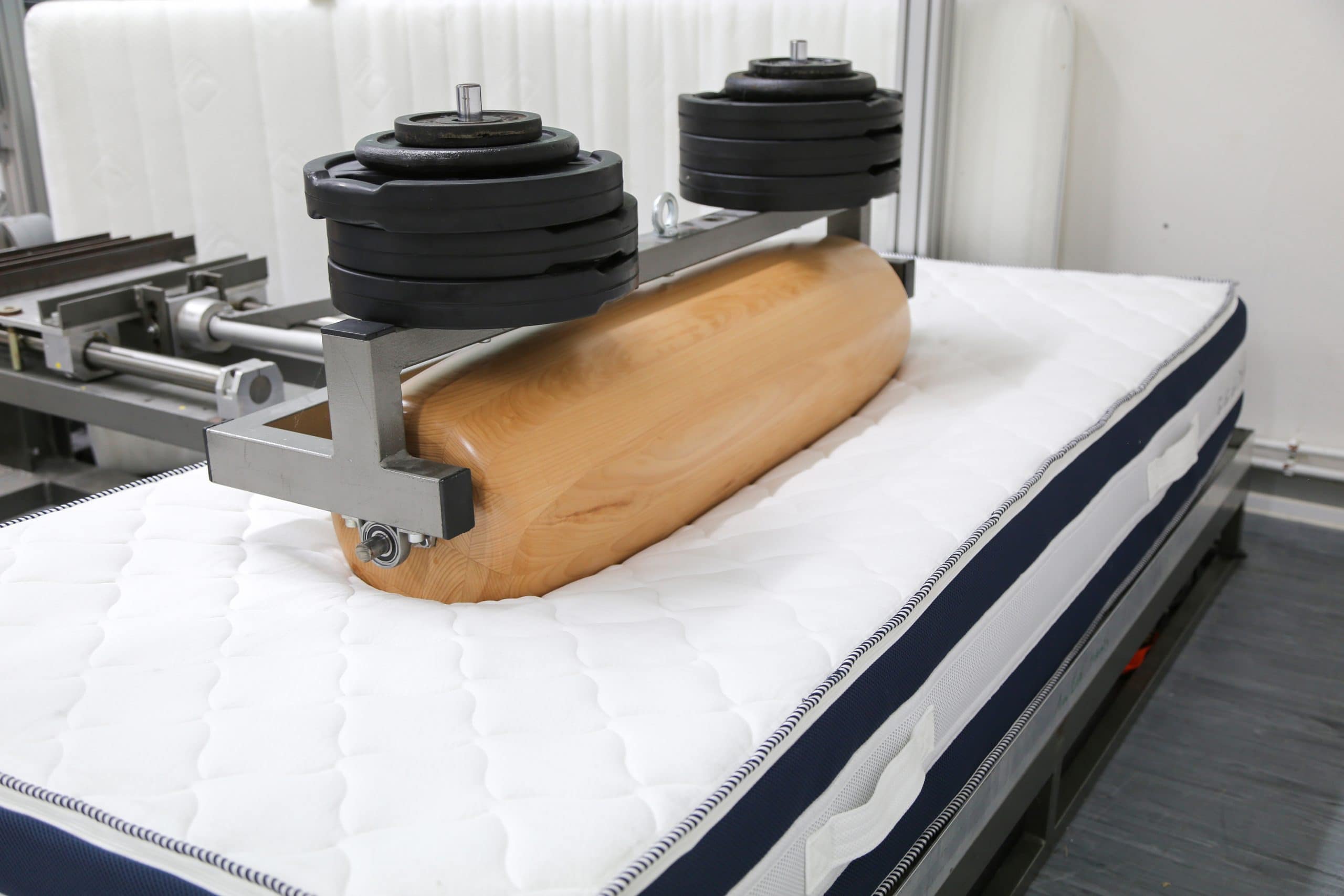
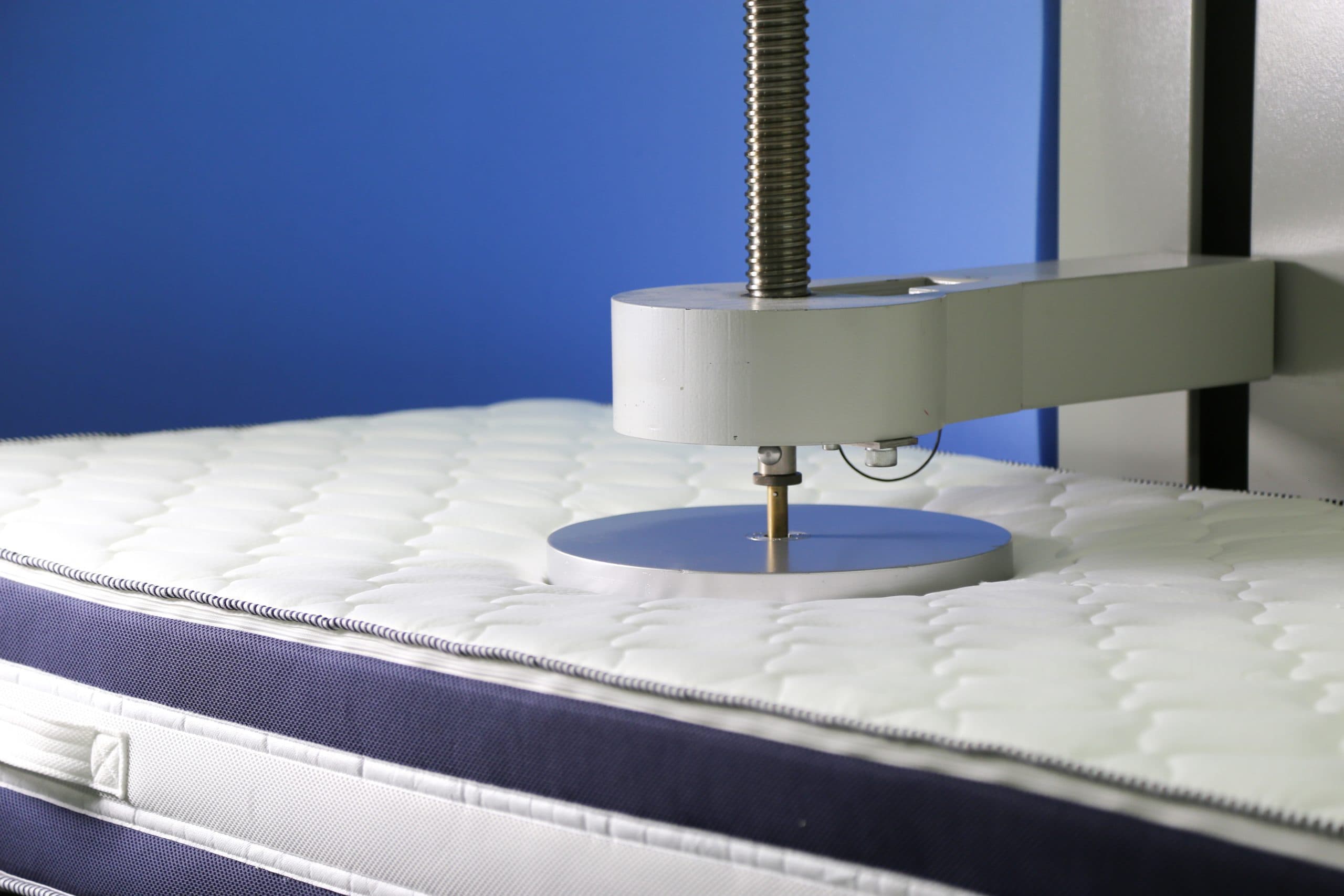
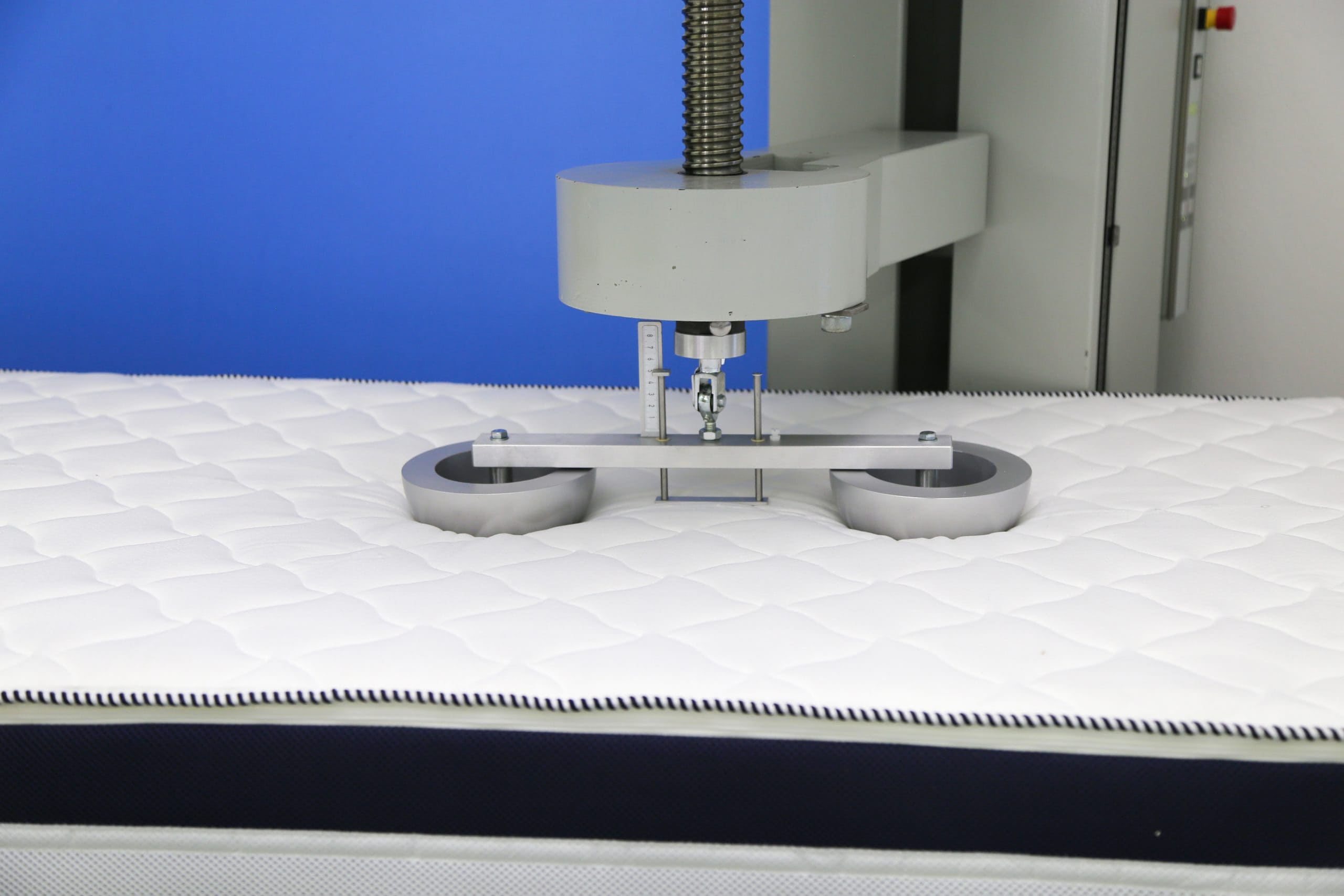
Testing and evaluating
The tests for body support characteristics were initially carried out on new, unused mattresses. The test mattresses were then subjected to a simulated continuous load and then the same body support characteristics were tested again and certain wear and tear factors were also checked. In addition, factors related to processing quality and cover quality, such as washability, fluff formation and pilling, were tested and evaluated for all test mattresses.
Overall, this test primarily provides a decision and orientation aid in the search for a new foam mattress. But it’s also clear that in the end, you can’t do without your own, entirely subjective judgement. The manufacturers are well aware of this. For this reason, almost all the test mattresses grant every buyer a trial period during which they can test the mattress and return it without risk if they don’t like it. The best trial period offered is more than 100 days. So the good news is: with this test and a non-binding trial period, at least the choice of a new mattress will no longer cause sleepless nights.
Matress Test: Summary
A good mattress is one of the most important items in a household. At the same time, mattresses so inconspicuous and unobtrusive that hardly anyone even thinks about them – until they literally rob you of your sleep. However, choosing a new mattress is so annoying and difficult that most of us postpone a new purchase until we really no longer can.
Because hand on heart: who really wants to try and get to grips with the confusing range of mattresses? And how long is it supposed to take anyway? This is exactly where this mattress test comes in. With an unprecedented level of detail and accuracy, IMTEST shows you how meticulously mattresses are put through their paces and what results are achieved as a consequence.

„A MATTRESS IS A VERY PERSONAL MATTER. SO EVEN WITH THE WINNERS HERE, IT STILL PAYS TO TRY IT FOR YOURSELF!“
Jan Bruns
IMTEST-Expert
It was crucial to achieve the greatest possible objectivity in testing and evaluation. After all, hardly anything else is as dependent on personal impressions as choosing a mattress. If you are looking for guidance in this respect, tips are of little use as everyone is different. This test is more than a tip and the clear message from it is that “Die Matratze” by Weltbett achieves the best results overall, even if it only just pips Emma One, BodyGuard and others to the post.
On the other hand, this shows how high the standards for mattresses already are overall, but on the other hand, it also shows how important a detailed assessment is. People will now be able to compare their own body with the given body types for orientation. In any case, the best thing is that you no longer have to fight your way through an impenetrable jungle of offers, but have this test to guide you, unless you would rather opt for a sprung mattress instead. If so, perhaps it’s best to wait until the results of the next test – coming soon.


